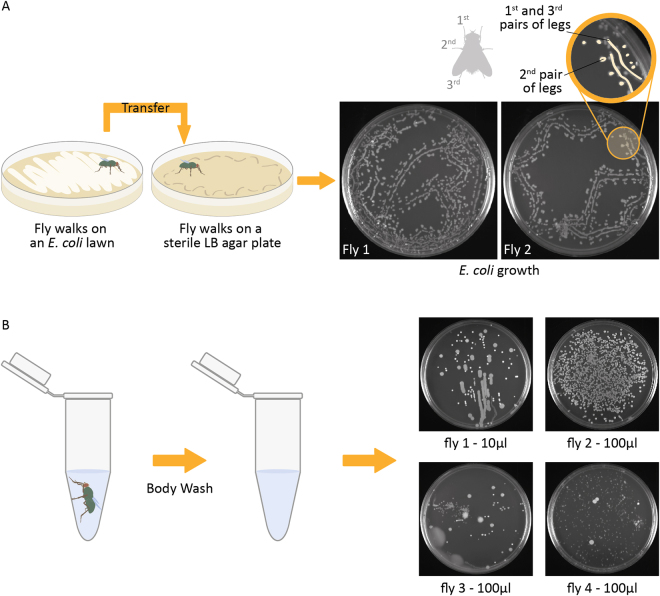Figure 7.
Microbial transport by a mechanical vector. (A) Blowflies were exposed to a Petri dish with an E. coli lawn and then allowed to walk on a fresh, sterile agar plate. The path of the fly walking on the agar can be seen as footprints after incubation. The line of growth indicates that dispersal of bacteria by the blowfly occurs mainly via the legs. The track pattern matched the arrangement of the three pairs of legs, with the first and the third pair resulting in nearly continuous, linear bacterial growth and the second pair of legs generating separate circular colonies on the outside of the lines (see inset for detail). In a few instances, it was possible to observe bacterial growth between the lines of growth probably from mouthparts. (B) Growth experiments to evaluate viability of bacteria on the outer body surface of blowflies. The flies were sampled in urban environments near a food court and washed with PBS sterile buffer for 10 minutes. The buffer was then spread in LB agar plates and incubated at 37 °C overnight. Up to 30,000 CFUs were estimated from body washes, showing that bacteria can be transported on the exterior surfaces of flies in a viable state that they can be cultivated.

